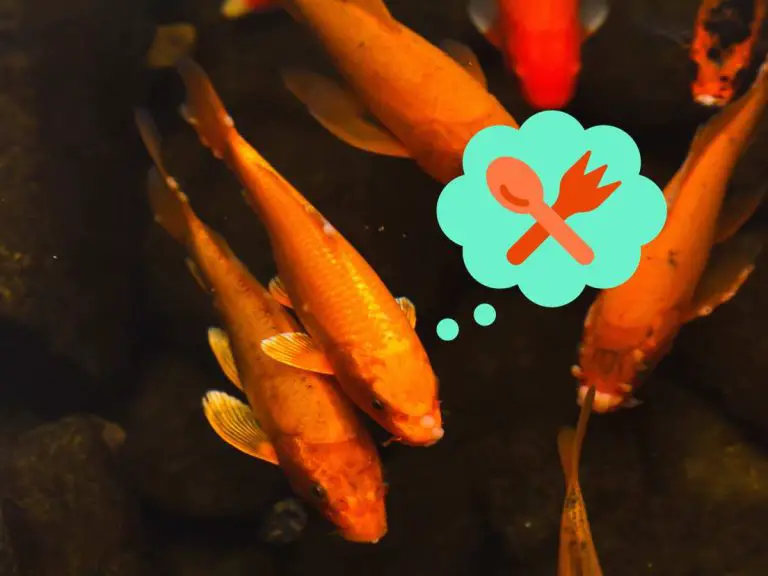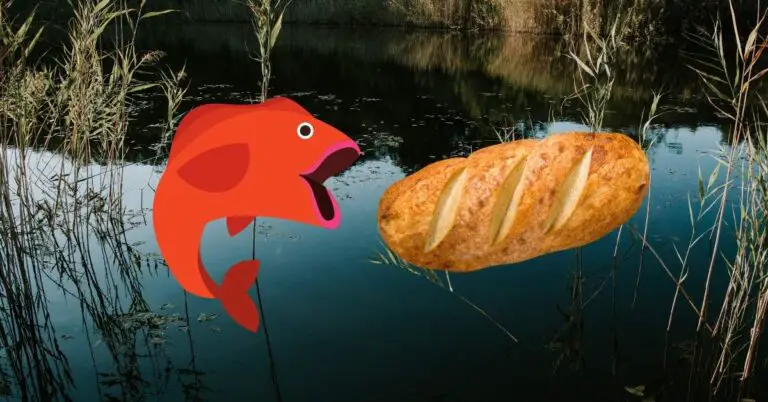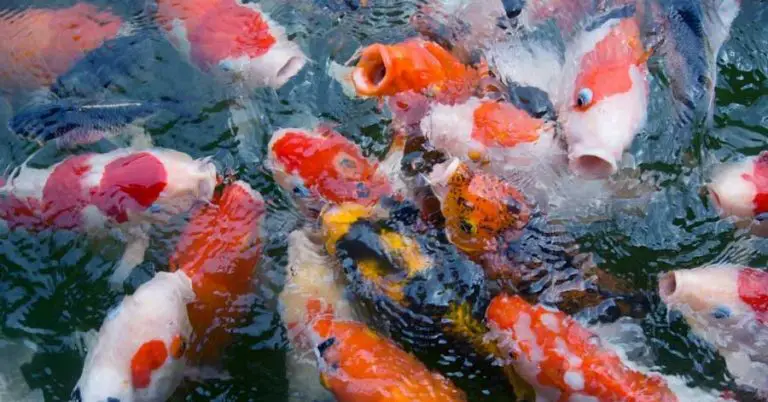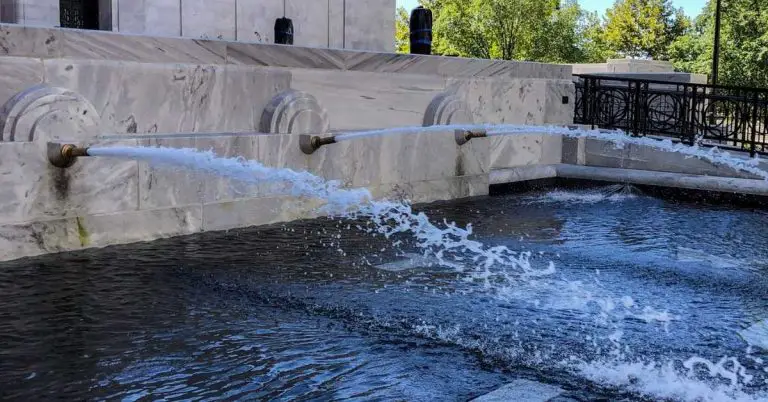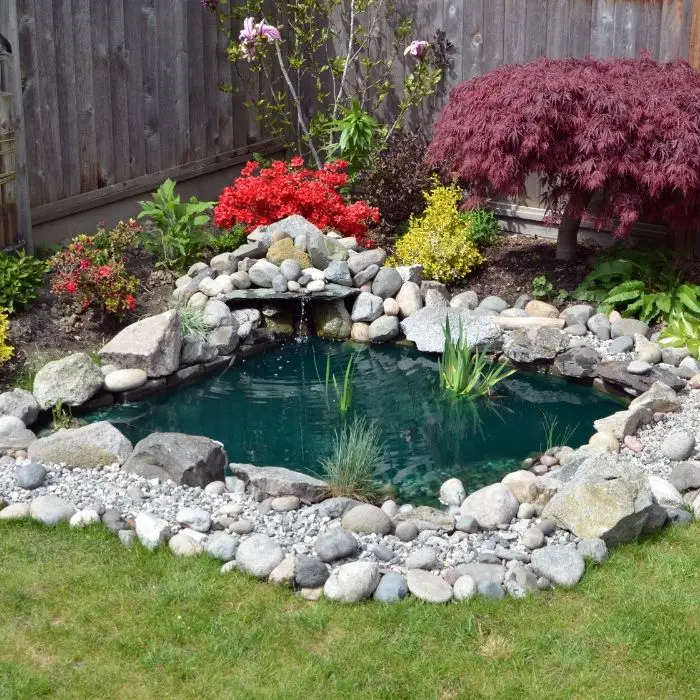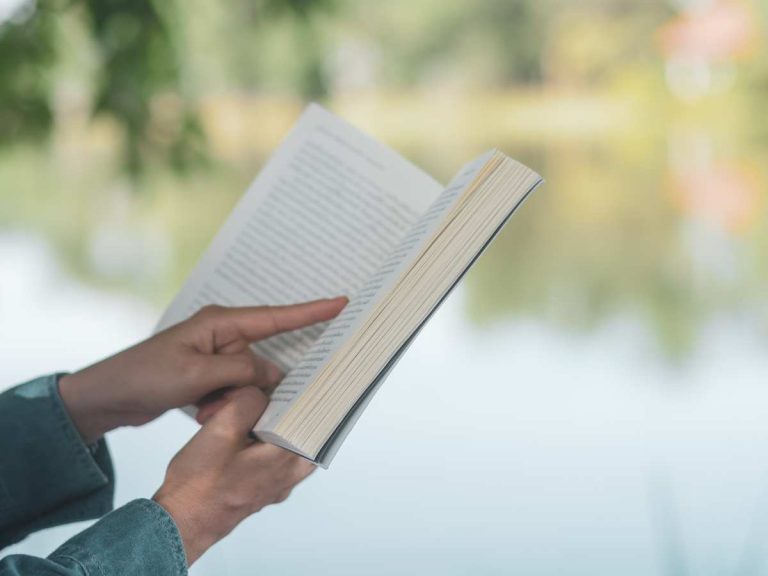Can A Garden Pond Be In The Shade?
If you’re in the process of building a pond somewhere on your property you’re probably evaluating where to build it. Not all backyards have nice sunny spots to place the pond, so what about building in the shade? Will the plants, fish and other aquatic life survive without direct sun? Let’s go over whether or not it’s a good idea to build your pond in the shade.
A pond can survive and thrive in the shade, but they do best in partial shade. The lack of direct sunlight can have several benefits such as reduced algae growth and a more stable water temperature. Pond plants that do well in the shade include Water Hyacinths, Water Clover and Marsh Marigolds.
But ultimately whether or not your pond will thrive in the shade depends on what kind of pond you have or are planning on building, and how much shade you’re dealing with.
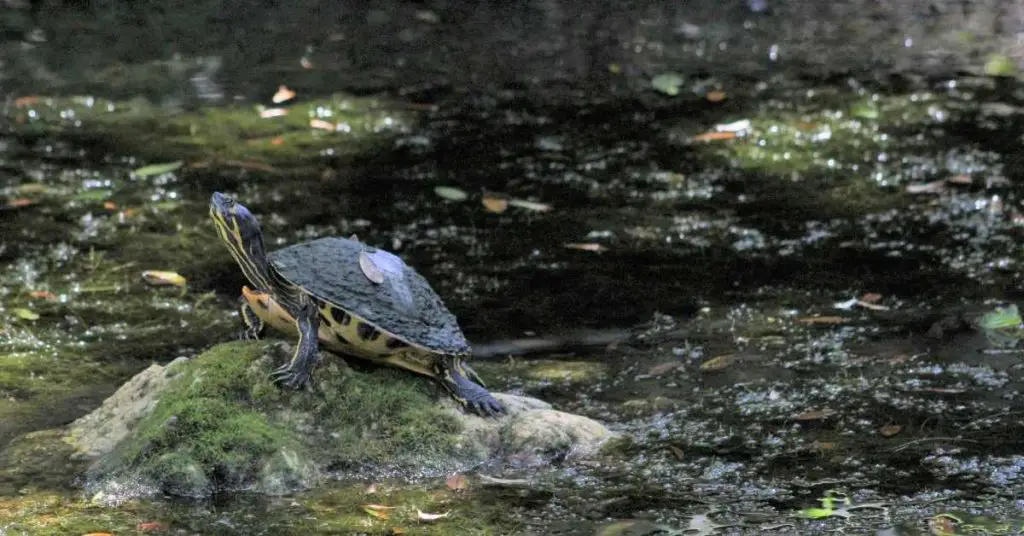
Ponds Do Better In Partial Shade Than Full Shade
In general, shady ponds that are exposed to partial sunlight during parts of the day will fare better than ones that are completely shaded 100 percent of the time.
This is especially true if your pond has fish. Pond fish, such as koi and goldfish, need nutrients to survive, and they get most of their nutrients from local plants. So, a pond that gets at least some sunlight during the day will be able to sustain more plants and other aquatic life for your fish to feed on.
If possible, it’s best to place your pond in an area that gets at least a 4-6 hours of sunlight per day. Partial shade like this will provide an optimal balance of reduced algae and unwanted bacteria while also protecting your fish from harmful exposure to direct sunlight all day.
By contrast, a pond that gets no sunlight will only be able to support minimal plant life. In these circumstances, algae growth will be minimal, which is good. But in order to sustain any amount of plants or fish you will likely need to resort to bringing in extra food and nutrients for them if you want them to reach their full genetic potential. And even with this extra care, many of your plants will survive but not flower as they would in full sunlight.
Fully Shaded Ponds Can Attract Unwanted Pests
A consequence of few plants in your pond is less oxygenation. To combat this, you will likely need to ensure your pond is using an electric pump or some other kind of water feature. What this will do is aerate the water in your pond and make sure that enough oxygen is available to prevent your water from stagnating.
Allowing the water in your pond to go stagnant should be avoided at all costs. Stagnant water will prevent the pond from supporting fish life and it can also turn it into a hotbed for unwanted pests. Stagnant, still bodies of water are generally advised against as they attract insects like mosquitoes, vermin like mice and rats, and can even become a breeding ground for West Nile and Zika Virus is hot humid places like Florida.
Related Post: Will A Backyard Pond Attract Rats And Mice?
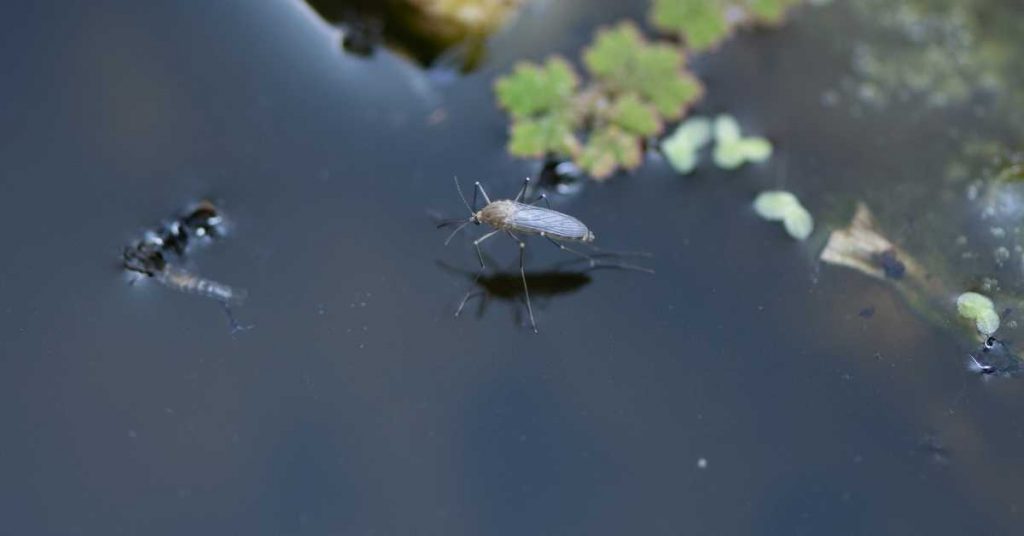
A Bit Of Shade Over Your Pond Has Some Advantages
Having a shady pond is not something you need to avoid at all costs. In fact, there are some definite advantages to building your pond in some shade.
Ponds with more shade are far less likely to become overgrown with algae and are more likely to maintain a cooler temperature.
The sun is a major source of nutrients for all life on the planet, including in your pond. One of the organisms that love the sun the most is algae. Algae feeds off of the natural nutrients present in a pond as well as from the sunlight. Without countermeasures in place, algae will bloom and thrive in such a sunny environment. A shady pond, on the other hand, will have minimal algae and will not require any artificial algaecides to keep it under control.
Shady ponds also encourage cooler temperatures throughout the day. Cooler temperatures actually increase the levels of oxygen in your pond’s water which can counter some of the effects of having fewer oxygen producing plants present.
Shallow ponds might benefit the most from the shade as they tend to warm up too much and too fast under direct sunlight. A shallow pond in some shade might even be able to support a small amount of fish and plants, provided all other conditions are met.
Related Post: How To Keep Your Pond Cool In Summer & Extreme Heat Waves
Many Types Of Pond Plants Thrive In The Shade
Many types of pond plants can grow just find in a shady spot, you just need to pick the right ones. These shaded plants will benefit from the reduced levels of algae that would otherwise be sucking up valuable nutrients.
As I mentioned before, most pond plants require 4-6 hours of direct sunlight to reach their full potential, but there are plenty of plant types that can flourish in partial shade or 3-4 hours of direct sunlight.
Some plants might do better in direct sunlight but can still thrive in partial shade as well. Water lilies are one such plant, but you’ll find that while they grow in the shade they will most likely not flower without direct sunlight.
Some other plants that thrive in shady climes include. Here is a list of suitable water plants for your shady pond categorized by species and type.
| Hardy Water Lilies | Tropical Water Lilies | Shallow Water Plants | Floating Plants |
|---|---|---|---|
| Comanche | Panama Pacific | Imperial Taro | Fairy Moss |
| Indiana | Tina | Black Magic Taro | Frogbit |
| James Byrdon | August Koch | Cardinal Flower | Water Lettuce |
| Texas Dawn | Director Moore | Sensitive Plant | |
| Virginia | Shirley Moore | Parrot’s Feather |
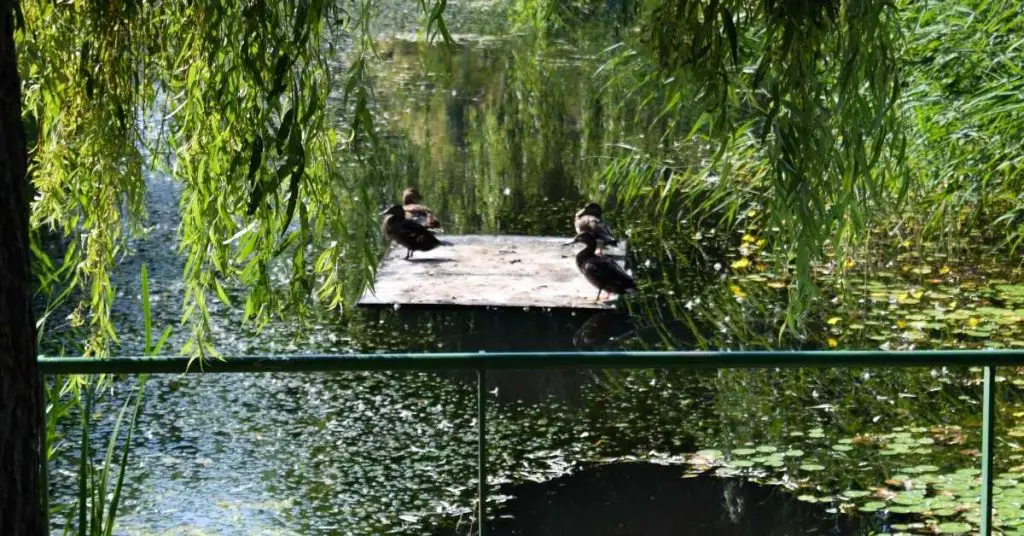
Best Ways To Maintain Your Shady Pond
If you’ve decided you want to build your pond in the shade, or you already have one, you need to make sure you’re keeping it well maintained in the best ways in order for it to remain (or become) the beautiful spot you always intended it to be.
The following is a list of tips and suggestions for keeping your pond in the shade healthy.
Keep Pond Water Clear Of Debris
Like with all ponds, make sure you keep the surface of the water clear of debris. This means regularly running a pond skimmer net through the water to remove any bits of leaves, twigs and dirt that fall into the pond on a regular basis.
This is especially important for a shady pond if the source of the shade is a tree or bush to begin with. Any nearby trees will regularly deposit debris into the pond which will eventually decay and lead to an excess of nutrients which will inevitably lead to algae and murky, cloudy water.
Related Post: How Often Should I Clean My Backyard Pond?
Trim Nearby Trees And Plants
This suggestion goes in tandem with the previous one about clearing debris.
If your pond is abutted by trees, large plants or bushes, as most ponds with shade are, keep them trimmed and well maintained. Doing so will help prevent loose leaves and branches from falling into your water and decomposing, leading to an increase of algae, bacteria and sludge.
Add Rainwater For Balanced pH Levels
Part of the natural lifecycle of any pond usually involved a healthy dose of rainwater from time to time. But if your pond is fully, or even partially, shaded, it may not be getting any rainwater at all.
Rain is good for your pond because it’s a natural source of soft water without the addition of chemicals such as chlorine or fluoride like tap water. This kind of water also has the benefit of not negatively affecting the pH levels of your pond. According to Nualgi Ponds, a healthy pH level range of between 6.5 and 9.0 is ideal to support most fish and plants.
So if you find the water level in your shaded pond is getting a bit low due to lack of rainfall, try collecting some rain in a bucket and adding it in instead of filling it with tap water from a hose. The fish and plants surviving off of your pond’s water will benefit from the naturally balanced levels of chemicals and acids.
This, of course, assumes that the rain in your area is not acidic.
Related Post: What pH Level Is Best For A Koi Pond?
A Pump Or Waterfall Will Keep Your Pond Oxygenated
Without direct sunlight on your pond throughout the day, you will naturally have less plants and aquatic life than one placed outside of the shade. This means fewer plants giving off oxygen into the air and water around your pond.
One way you can combat this is to use a pump. Pumps work by aerating the water which incorporates oxygen from the air into the pond. This will ensure that any fish or other aquatic life that requires oxygen to live with still be able to thrive despite the lack of sun.
Related Post: What To Put In Your Backyard Pond
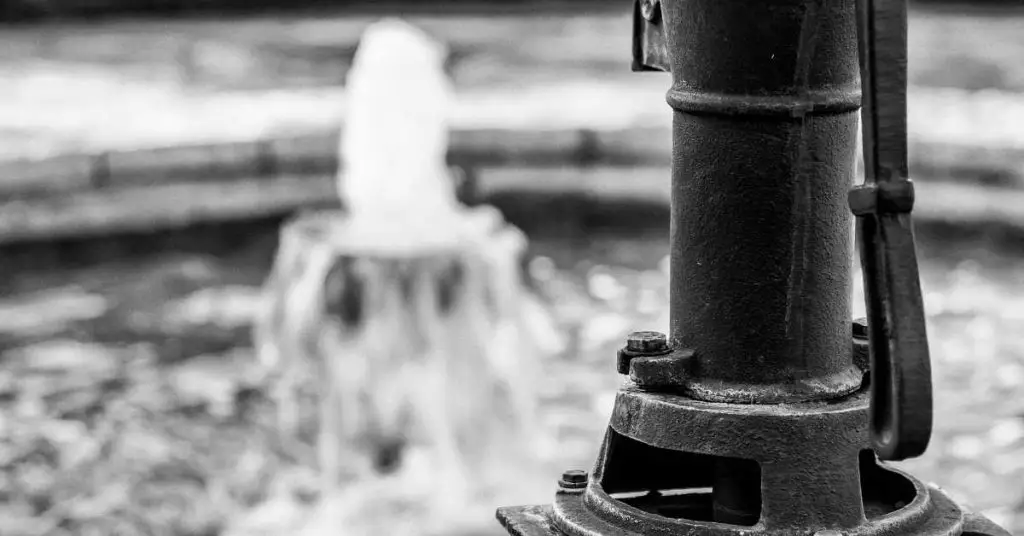
Final Thoughts
There is a lot to consider when placing your pond in your backyard or garden, the most important of which being shaded or sunny.
Most people choose a sunny spot for their pond, but shaded ponds can thrive just as well. You simply have to know what it’s capable of and how to take care of it.
First, remember that ponds in the shade do come with some risks such as stagnant water and unwanted pests like mosquitos and vermin.
But with proper care and adequate oxygenation, there can actually be quite a few advantages to having a pond in the shade such as reduced algae and a more stable water temperature. There are also lots of types of plants which can thrive specifically in a shady pond. Consider adding water features such as a waterfall as well as a pump and filter.
So, as long as you follow all of the necessary maintenance and cleaning routines, your pond in the shade can remain vibrant, beautiful and full of life.
Related Posts:
How To Keep Your Pond Cool In Summer & Extreme Heat Waves
Will A Backyard Pond Attract Rats And Mice?
51 Backyard Pond Ideas – Visual Inspiration For Your Next Garden Pond Project
Backyard Pond Cost Per Year – Maintenance & Cleaning Costs Breakdown
Related Questions:
Can You Put A Pond In A Shaded Area?
A pond does best in a partially shaded area as it gives the life of the pond the energy it requires, but not so much that the water becomes overheated and depleted of oxygen. A partially shaded pond can be especially beneficial in parts of the world that experience very hot summers and direct sun for much of the year.
Do Ponds Need Direct Sunlight?
Many pond plants need direct sunlight for optimal growth, however too much direct sun can be detrimental to the health of your pond. Unwanted organisms like bacteria and algae need sunlight to live and too much of it can cause them to bloom which both depletes your pond of oxygen and kills your plants and fish if left unchecked.
How Much Sun Does My Pond Need?
In general, a pond does well with 5-7 hours of direct sun per day depending on the intensity of the sun in your part of the world. However, too much sun can cause problems such as algae blooms and depleted dissolved oxygen levels. This is why it’s best to situate your pond in a place where it can get equal parts direct sun and partial shade over the course of a day.
Should I Shade My Pond?
I always make sure my ponds are partially shaded because it gives protection from unwanted algae blooms and keeps oxygen levels high. Shading your pond, at least partially, is one of the easiest and most beneficial ways to keep your pond healthy and full of life.

